A Philosophical Enquiry into the Origin of Our Ideas of the Sublime and the Beautiful
- 17 Pages
- Published On: 06-12-2023
A Philosophical Investigation into the Origin of Our Ideas of the Sublime and the Beautiful (1757) is an exploration of the interrelationship between perception, imagination and judgment in art's experience. Burke discusses how feeling, imagination and judgment decide the experience of pleasure, pain and the aesthetic ideas of beauty and sublimity reflect pleasure and pain. Burke suggests that we have to explore the sense of pain and pleasure in order to grasp the roots of our concepts of the sublime and beautiful. Pain is not just pleasure, and pleasure is not just pain removal. For students delving into psychology dissertation help, Burke's exploration offers a rich foundation in understanding how sensory experiences influence aesthetic perceptions. Pain can be caused by pleasure withdrawal, but pain can also occur. Similarly, the removal of pain can cause pleasure, but pleasure itself. Pain or joy may be accompanied by indifference or followed by it (Valsiner, 2018). Indifference is not a state of suffering or delight (Part I, Section II). Indifference may take away joy or pain. Bitterness can be removed through suffering or enjoyment (Hur & McManus, 2017). The ideas of sadness, joy, and indifference are simple, Burke says. These simple concepts can be mutually independent. They are not ideas or ideas in relation to each other only. They are not ideas. Each of them has its truth. The ceasefire may lead to indifference, deception or complaint. On the other side, the ceasefire will lead to indifference, satisfaction or pleasure (Hur & McManus, 2017). Burke is referring to the word "delight" as a pleasure induced by the elimination of pain, while he is referring to pleasure in and of oneself by using the term "delight." According to Burke, pain can be a stronger emotion than happiness, and it can affect the imagination even more. The concept of pain or risk may, however, be a pleasurable type of fear which is described as delights when the human is not actually in pain or danger (Valsiner, 2018). The sublime is responsible for this pleasure. Interpreting the building and thinking about how successful the book of Edmund Burke is in explaining all the concepts discussed and how beauty is described or found in the Balfron Tower and how or wherel the book can be shortened, or whether the book can interpret the ideas of the Architect Ernö Goldfinger, of the Balfron Tower fully. It was established in 1965, 20 years after the Second World War, the Balfron Tower was designed by Ernö Goldfinger.

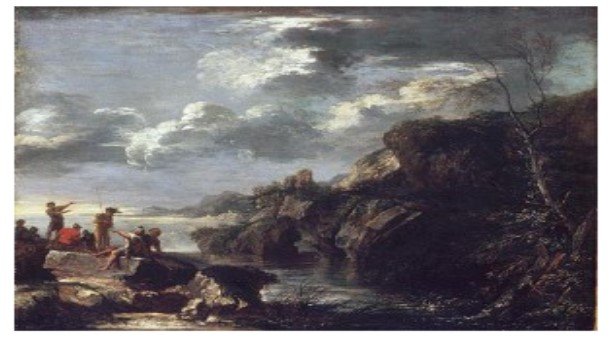
Others aspects are the commentators from the 18th-century attempted the same, in terms of depth and intellectual performance, Burke's survey far exceeds the others. Discuss theories on how and why different forms of pleasure are thought of in various ways. This applies to the Balfron Tower in several ways that allow Goldfinger to recognise important decisions and design choices. We can conclude that, while considered as something, Balfron Tower has elegance. It has a long history, which dates back to the first century C.E. when the Greek critic Longinus introduced in his esthetic treatise On Sublime his definition of the sublime (Peri hypsous). The Latin sublimus is the root word, a fusion of "sub" (up to) and "limen" (literally, the top piece of a door). Burke's main goal is to establish a collection of scientific concepts to prove that the sublime and the beautiful are incredibly disgusting. This concept contributes to the classical difference between pleasure and pain (Valsiner, 2018). He also distinguishes between enjoyment and pleasure; he characterizes the former as a pleasure in certain "positive" senses, while the latter arises for him from the reduction in pain or danger. According to Burke, the principle of self-preservation gives rise to enjoyment, provided that the discomfort and risk associated with the former "do not push too close" but only engages in empathy, interest or imitation (Hur & McManus, 2017). Positive gratification follows the second division of passions that affect 'sexual culture and general society.' This distinguishing between passions of self-preservation and society is fundamental because it leads him to identify and distinguish his principal esthetic categories:
“Then passions which belong to self-preservation turn on pain and danger they are delightful when we have an idea of pain and danger, without being actually in such circumstances whatever excites this delight I call sublime”. “Beauty is a name I shall apply to all such qualities in things as induce in us a sense of affection and tenderness, or some other passions they most nearly resemble. The passion of love has its rise in positive pleasure”.
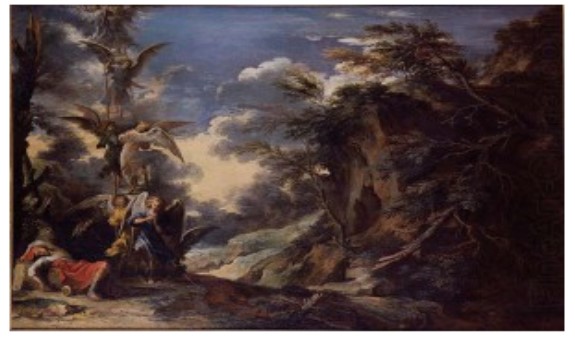
Furthermore, for Burke, the result of the most sublime is astonishment "with a degree of terror, the state of the soul in which its movements are hung." Therefore, sublimity can be called the state in which a thought or emotion is derogated from the ability to understand, discern and articulate. Nonetheless, the mind gets a feeling for what is beyond thinking and speech through this very loss (Hur & McManus, 2017). Ibata, (2018) says that emphasized by Burke on the sublime negative aspects, Burke's distance between himself and the sublime was important (Valsiner, 2018). For (Hur & McManus, 2017) the sublime is "freedom and exhilatory, a kind of happy aggrandizement," but Burke considers it to be "alienating and declining." For Burke, the root of the sublime is, "It is efficient of the greatest emotion, which the mind may experience, that whatever is awful or knowledgeable in some way, regarding horrible things or functions in a way similar to fear." The consideration of fear as the main cause of the sublimes reflects a shift toward a possibility of sublime effects created by figuration, away from "literal" causes of increased responses, for instance, qualities inherent in natural objects.
In addition, as Châtel, (2020) indicates, the sentence itself becomes ambiguous and inscrutable, which transmits the sense of sublimity by a formal manifestation of expressive ambiguity, which seems to indicate in turn that the roots of the sublime lie more in words than in concepts (Hur & McManus, 2017). Although Burke does not agree that radical sublimity is simply an effect of the language, he seems to be on the verge of it again and again. As an Empiricist, Burke asserts that the proof of senses sight, sound, smell, taste and touch only gives our understanding of the universe. Though Baillie's influence is palpable in this, the latter restricted the importance of vision and hearing in the senses. (ii) Burke at least attempts to produce an esthetic theory that takes account of all human responses in arts, despite the literature resulting in absurdities.
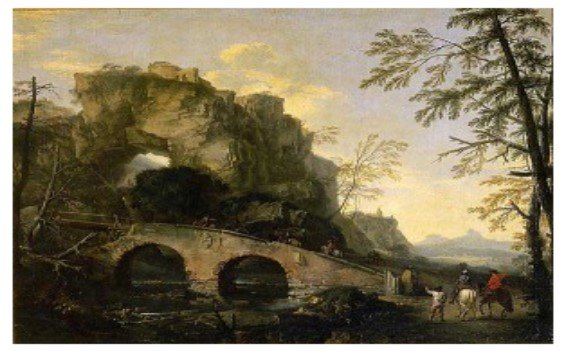
In addition, in contrast to his predecessors, the statement of Burke makes it fully secular as God does not need to be authentic in our experience. For example, Burke considers the ocean to be a source of fear not because it is an expression of the magnanimity of God, but because "the eye gets struck by a large number of distinct points while considering a large body." The eye "vibrating in all its sections must reach the essence of what causes pain and must thus generate an understanding of the sublime." In addition, in contrast to his predecessors, the statement of Burke makes it fully secular as God does not need to be authentic in our experience (Hur & McManus, 2017). For example, Burke considers the ocean to be a source of fear not because it is an expression of the magnanimity of God, but because "the eye gets struck by a large number of distinct points while considering a large body." The eye "vibrating in all its sections must reach the essence of what causes pain and must thus generate an understanding of the sublime." With the magnificent "we apply our admiration," while with the magnificent "We love what is submitted to us." Beauty is often of a less ethical type for Burke. Buch, (2020) say that, In an Enquiry, sublime virtues are reflected in the authority of the father and venerable and Distant mothers and women, in general, are "compassionate and caring social virtues" and the masculine sphere is synonymous with pain and horror (Hur & McManus, 2017).
Considering current times and, more precisely, discussing enlightened aesthetic, the term "enlightened" may seem odd, since it mostly identifies with political regimes and scientific systems. However, reality is a return to the sense of the principle of illumination, and the esthetics of it has never been so important for us to understand the world around us. At a period when cultural marketing and the cultural and product industries have been spreading, the esthetic reflection accompanying the 18th century Enlightenment revolution must inevitably be brought back on the scene. The sense of pleasure and pain is completely vague and subjective. It is understood as a specific type of esthetic feeling that today remains a matter of beauty or contrary to it. The concepts of the exquisite and sublime are, without a doubt, the most important of all esthetic philosophy (Hur & McManus, 2017). In the case of the beautiful, one of Plato's deepest and most magnificent reflections inspired the esthetics of ancient times and the Middle Ages. The notion of the sublime was less profoundly discussed; however, while important aspects such as St. Augustine undoubtedly existed in the middle ages, it was not a relevant subject. This can help understand why many people think the Balfron Tower and other brutalistic structures are hideous and disgusting and others think that the buildings are the opposite. The word is reintroduced into the esthetic language until the 'Tratuation of the sublime,' which was originally rather restrictive in the field of rhetoric and literature, was Hur et al., (2018) translated by Longinus in 1964. In the sense of excellent speech and perfection, Longinus only considered the sublime without, however, really analyzing its meaning or essence. In his view, Power, (2020) defines the sublime as opposed to the beautiful, that is, in the way we encounter a moment of conflict with it as opposed to the beautiful. In addition, he splits the esthetic experience into the sublime and the gorgeous into the sublime and the creatively sublime. As Burke says, this generates a delight that knows that you do well as others suffer. Applied to Balfron Tower, the bland colors and plain repeat in the framework of buildings may be argued because each floor was basically copied and pasted. The esthetic development does not produce a sense of culture and creates feelings of uniformity and oppression.
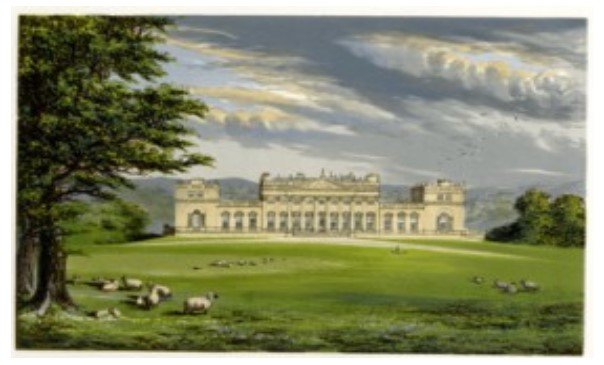
Both of these are related to nature's immense scale and enormous strength. The meaning of the sublime, as Kant's definition of both the mathematically sublime and the dynamically sublime indicates, is the force human beings have over nature, although they feel overwhelmed and are not able to grasp it in their imagination. You cannot speak about the sublime without mentioning that the beautiful is "counterpart." Philosopher Edward Burke's 1757 book 'Philosophical research into the roots of our concepts of the Sublime and the Beautiful' first introduced the idea of the beautiful and the sublime (Myrone, 2017). In 1790, Kant differentiated further the distinctions between the two in his book 'Philosophical Inquiry.' One of the main distinctions between beauty and the sublime is that the sublime is purely formless while it is inseparable from pure forms (Pelowski et al., 2019). The judgments on what is regarded as attractive are generally surrounded by positive emotions and direct pleasure. For instance, take the 1872 painting Niagara Falls by John William. Beauty brings with it almost an illusion of vulnerability and imperfection and women learn to "false weakness and even illness" as agents of it. It is obvious that the lovely, like the sublime, is powerful as well, but of a devious and unsure sort (Hur & McManus, 2017). In the last case, but in the former case, we "will have to adhere to what we admire." Thus, while in its subjects, the sublime might cause fear and terror, it at least has the virtue of being not disappointing. But despite Burke's total negation of elegance, his privileged category of the sublime is constantly threatened (Hur & McManus, 2017). As Shaw notes, "His treatise is continually undermined by the exclusion of the feminine." This is obvious in Burke's attention to the vitiating impact of appearance Bromwich, (2017). Burke writes that the body "falls into a sort of shock that is followed by an inner feeling of melting and lingering," written in "love."
In contrast to the stress and the work of the sublime, love is unperturbed and mediocre "the mode of the love that softens relaxes enerves, dissolves and pleases the stringent of identity." Thus feminine stupor takes the masculine authority of the sublime again to the top. But Burke is showing his unacceptable acceptance of the former claim in the example of Homer's Iliad (Hur & McManus, 2017). According to (Hur & McManus, 2017), he offers the people a better friendly and social virtue than the Greeks, as he wants to encourage our compassion for the Trojans, thus seeking to compassion the former. However, in military and political virtues, the Greeks are given superior position, which makes them respected and revered, but not loving. Thus, while pity may be extended to the victorious, they are venerated by the victors. The problem with love for Burke is therefore that it promotes identification with the helpless, while sublime bewilderment preserves the noble virtues of bravery and honour (Hur & McManus, 2017). The sublime, in addition, "works as the cure to the exquisite dissolution. Every effort meets the requirements of work ethics. Training or job is the only antidote to this bad (manufactured by the beautiful). His image comes to be in a never-ending war of indolence among women. Burke has a profound issue with the notion that society should be linked to household or female qualities and self-maintenance to masculine ideals of heroic exceptions. The esthetic theories of Burke can be connected with his political doctrines. As mentioned by Emmer, (2017) "Burke is informing and forming a number of his fundamental political ideas two fundamental esthetic types, Sublime and Beautiful." The Reflections on the French revolution (1790) which inspired Burkes' most important political treatise was his earlier aesthetic treatise, can be seen from his letter to Lord Charlemont in 1789. The revolt is a sublime dramatic experience for him Burke, however, also understands the threat: "the ancient Parisian ferocity has shockingly broken out," not only in France but also in England.
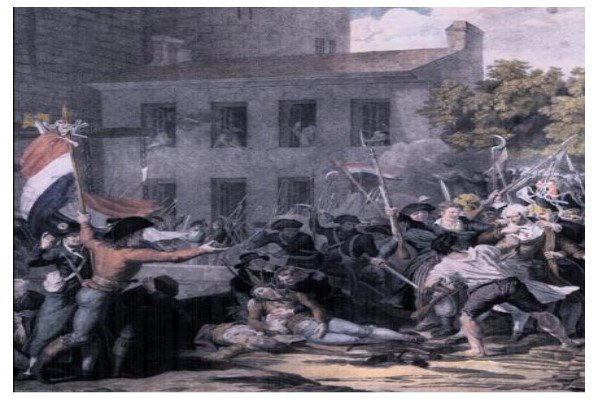
As Clewis, (2018) points out, "there is a worrying inconsistency to the overall attempt at contemplative detachment that this ferocity could go above its nation's borders by infecting our English home with the germ of insurrectionary aggression." The investigation also touched on the difference between violence dramatic and real, and while Burke agrees with the latter, in both cases the response provided by the spectators is the same. Burke still regards the Reflections as 'stunning and magnificent,' but here, the 'modes' and "instruments that are most disdainful" are seen to be produced, thus uniting the sublime and the ridiculous. Antal, (2018) and Ibata, (2018) argued that the allegories of modern bourgeois identity can be found both within Enquiry and Reflections. As Gess, (2017) argues, "The Reflections seeks to make the Sublime a reclamation based on a difference between the harmful inflation of revolutionary speech and the 'natural' hierarchy contained in the British constitution." According to Burke, "in France, the spirit of democracy is tempered with horrible gravity" (in England). The British "support" is tied by indestructible links to the traditional and noble, contrary to the French "citoyen" who bases his passion on the false bluster of revolutionary fervour. The British constitution, in other words, is exquisite because it retains "awe and honour," while the French scheme is sinister because it fosters a multitude of revolutionary intemperance (Hur & McManus, 2017). In his account of the sublime, Burke asks critical questions about the relationship between mind and matter. He questions whether the sublime is a quality that resides in the objects of natural splendour, whether its nature is entirely arbitrary or whether the interaction between the two results. Another radical possibility he poses is if it's just a language influence.
The conclusion that can be drawn from this theory is that it is not only beautiful but sublime which makes a great work of art so inspiring. Although love or admirations are inspired by the beauty of an artwork, the sublimity of artwork may inspire admiration or stupor at its mystery and strength. According to Burke, symmetry and balanced proportion are not the reasons for beauty. Objects that vary in their level of symmetry can also be seen as beautiful. the Balfron Tower could be argued that Goldfinger used brutalism to construct the feelings of what Burke called a Sublime by means of harsh and probably negative aesthetics. Goldfinger uses this Sublime idea to encourage positive character and to offer an alternative path to beauty. Objects that are similarly exquisite in their different dimensions can be considered. Disproportion is not beauty's opposite. The oddity is the contrary of beauty (Part III, Section V). Burke also says that perfection is not the cause of beauty, since imperfect qualities can be regarded as magnificent. In reality, at times attributes can be considered more beautiful because they are imperfect. Perfect or imperfect beauty may be. Burke notes that the attributes that demonstrate beauty include lightness, smoothness, transparency, elegance and incremental variation. Though sublime objects can be big and convincing, delicate and tiny beautiful objects. Although the sublime can be powerful and strong, it can be mild and tranquil. Although the sublime can be tragic and dim, the beautiful can be happy and luminous. The sublime and the exquisite can also be mixed in works of art in various ways. As the Enquiry and the Reflections argue that although Burke makes no explicit statements about the sublime's discursive roots, they are both outside the aware author's influence and say this is an opportunity.

True, the grandeur of dimension has been seen from Longinus onwards as an explanation of sublimity; Hlobil, (2017), (Beachdel, 2018) and (As Gess, 2017) have tried a psychological explanation, but the physiological one only has been tried by Burke. According to Boulton, although Dennis and Smith's comments on Longinus find the connection of the sublime with terrorism, his theory as a whole has no precedent. Despite its dramatic differences from British contemporaries in Burke's treatment of the sublime in many respects, it represented British thinking from the eighteenth cent. And is often contrasted with the sublime Kantian. Nevertheless, as Beachdel, (2018) states, 'even when the British tradition is nearest to the Kantians, namely in the Burke writings, it also marks his distance more distinctly than ever. All in all, our Ideas in developing and doing a great artwork is inspired by Sublime and the Beauty.
Reference
Antal, É. (2018). The Rhetoric of Sublime Astonishment in the Burkean and Blakean Readings of Milton. Hungarian Journal of English and American Studies, 24(2).
Beachdel, T. (2018). A visionary shift in viewpoint. The British Art Journal, 19(3), 48-55.
Bromwich, D. (2017). Edmund Burke, Reflections on the Revolution in France. A Companion to Romanticism, 121-130.
Buch, E. (2020). The Sound of the Sublime: Notes on Burke as Time Goes By. SubStance, 49(2), 44-59.
Châtel, L. (2020). Hélène Ibata. The Challenge of the Sublime. From Burke’s Philosophical Enquiry to British Romantic Art. Miranda. Revue pluridisciplinaire du monde anglophone/Multidisciplinary peer-reviewed journal on the English-speaking world, (21).
Clewis, R. R. (Ed.). (2018). The sublime reader. Bloomsbury Academic.
Emmer, C. E. (2017). Burkean Beauty in the Service of Violence. Dialogue and Universalism, (3), 55-64.
Gess, N. (2017). Troubled Resemblances: Portrait and Poetics in Breitinger's Critische Dichtkunst, Wieland's Don Sylvio, Burke's Philosophical Enquiry and Radcliffe's Castle of Udolpho. MLN, 132(5), 1277-1300.
Hlobil, T. (2017). 14 The Reception of the Enquiry in the German-Language Area in the Second Half of the Eighteenth Century: August Gottlieb Meißner and Johann Gottfried Herder. The Reception of Edmund Burke in Europe, 24, 279.
Hur, Y. J., & McManus, I. C. (2017). Representing the sublime in the VIMAP and empirical aesthetics: Reviving Edmund Burke's A Philosophical Enquiry into the Origins of Our Ideas of the Sublime and Beautiful: Comment on" Move me, astonish me... delight my eyes and brain: The Vienna Integrated Model of top-down and bottom-up processes in Art Perception (VIMAP) and corresponding affective, evaluative, and neurophysiological correlates" by Matthew Pelowski et al. Physics of life reviews, 21, 135-137.
Hur, Y. J., Gerger, G., Leder, H., & McManus, I. C. (2018). Facing the sublime: Physiological correlates of the relationship between fear and the sublime. Psychology of Aesthetics, Creativity, and the Arts.
Ibata, H. (2018). The Philosophical Enquiry, theories of the sublime and the sister arts tradition. In The challenge of the sublime. Manchester University Press.
Ibata, H. (2018). The challenge of the sublime: From Burke’s philosophical enquiry to British romantic art. Manchester University Press.
Myrone, M. (2017). Burke’s Philosophical Inquiry into Our Ideas of the Sublime and the Beautiful, which was published in 1757, not long before Fuseli started his artistic career. He had a great intellectual curiosity and was exposed to many different philosophers and writers while traveling across Italy and Germany, inspiring his eccentricities. He represents both a true scholarly genius, as evidenced by the literary sources of his oeuvre, as well as an innovative artist, illustrating.
Pelowski, M., Hur, Y. J., Cotter, K. N., Ishizu, T., Christensen, A. P., Leder, H., & McManus, I. C. (2019). Quantifying the if, the when, and the what of the sublime: A survey and latent class analysis of incidence, emotions, and distinct varieties of personal sublime experiences. Psychology of Aesthetics, Creativity, and the Arts.
Power, A. (2020). Edmund Burke (1729–1797). The Green Book: Writings on Irish Gothic, Supernatural and Fantastic Literature, (16), 7-14.
Valsiner, J. (2018). Human psyche between the mundane and the aesthetic: The sublime as the arena for semiosis. In Cultural Psychology as Basic Science (pp. 43-55). Springer, Cham.
Continue your journey with our comprehensive guide to What are Attitudes and how do psychologists measure them.
- 24/7 Customer Support
- 100% Customer Satisfaction
- No Privacy Violation
- Quick Services
- Subject Experts



